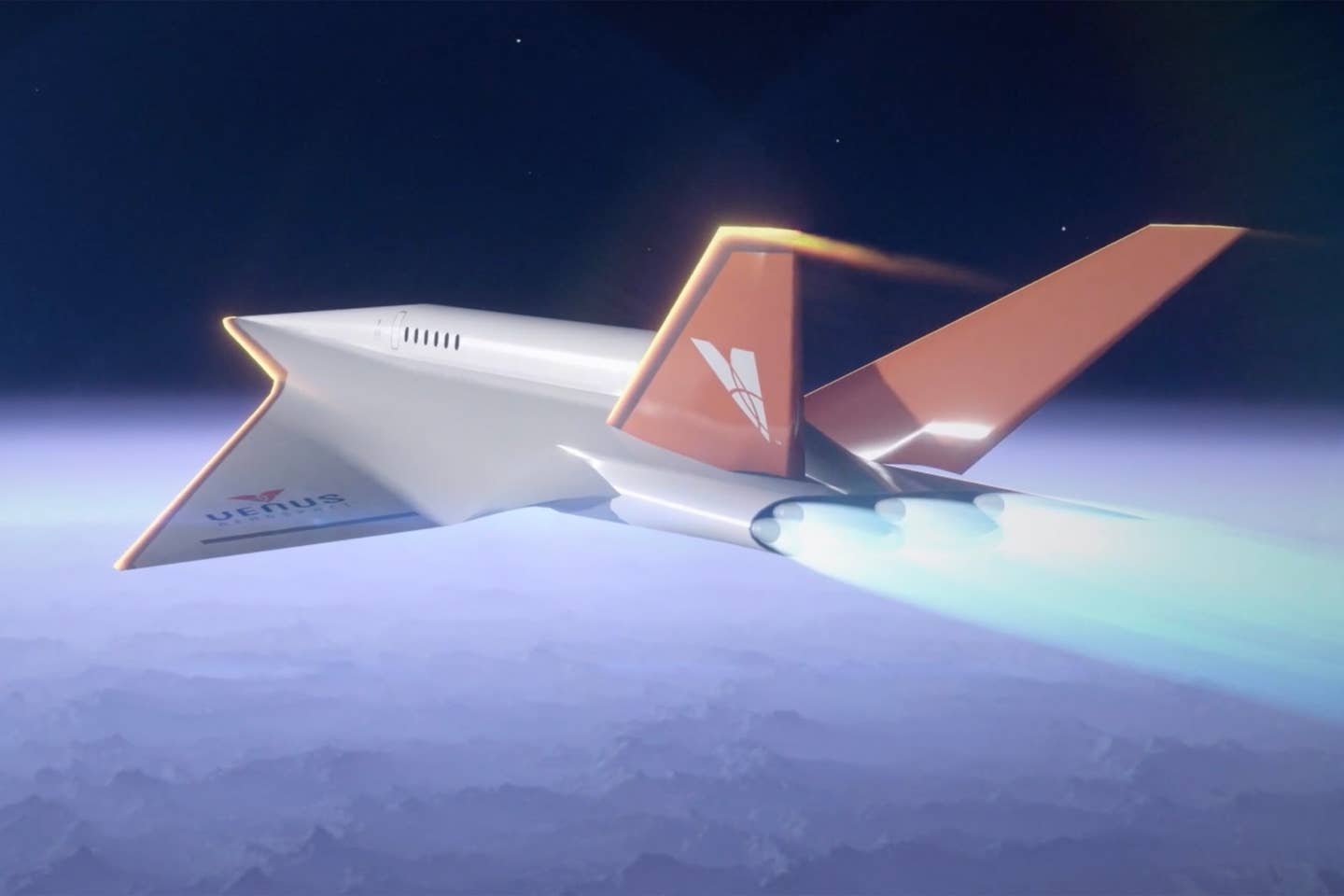Venus Aerospace Unveils Stargazer
Texas-based Venus Aerospace released the first design of its hypersonic space plane Stargazer that the company says will travel at Mach 9.

Animation showing a Stargazer space plane in flight was released Tuesday. [Courtesy: Venus Aerospace]
Venus Aerospace has a conceptual design for its hypersonic space plane known as Stargazer.
The Texas-based company unveiled its first design vehicle at UP.Summit, a three-day, invitation-only gathering of mobility innovators across air, sea, ground, and space being held this week in Bentonville, Arkansas.
The hypersonic aircraft will take off from a conventional airport, then climb to the edge of space. It is designed to travel at Mach 9 taking passengers to the other side of the world in one hour.
The Stargazer has been in development since Venus Aerospace was founded in 2020 by Sarah “Sassie” Duggleby and Dr. Andrew Duggleby.
Seeing an artist’s rendering of what took so many hours to create was an emotional moment for the team.
"This isn't science fiction, this is science fact," said Andrew Duggleby, noting the design has been in the making since the company was founded. "The rendering you see took many, many cycles to achieve."
Duggleby noted that Stargazer must have the ability to takeoff and land subsonically at conventional airports, and then it will fly hypersonically. The Stargazer as it stands now measures 100 feet wide by 150 feet long and will have a takeoff weight of 150,000 pounds. It will also have room for 12 passengers.
After the space plane takes off from a conventional airport and reaches 170,000 feet, Stargazer will level off and accelerate to Mach 9, the company says. Distances that take the better part of a day in a conventional airliner will be covered in about an hour.
Duggleby said the team really wants to keep the windows in the design because the high altitude views will be tremendous. "We think existing window technology will allow us to do that," he said.
He declined to say what kind of fuel the space plane will use, but noted that the aircraft will not have a carbon footprint.
One of the challenges the development team faced was determining the sound imprint.
"We worked with NASA at the Johnson Space Center and were able to access the information from the sonic boom testing from the Space Shuttle program," Duggleby said. "We determined that at altitude and speed flying you will not be able to hear us—we will be flying at 170,000 feet at Mach 9."
Flight testing of Stargazer will begin with subsonic speeds, followed by hypersonic.
Venus Aerospace has $1 million in government funding and has raised more than $33 million.

Subscribe to Our Newsletter
Get the latest FLYING stories delivered directly to your inbox






